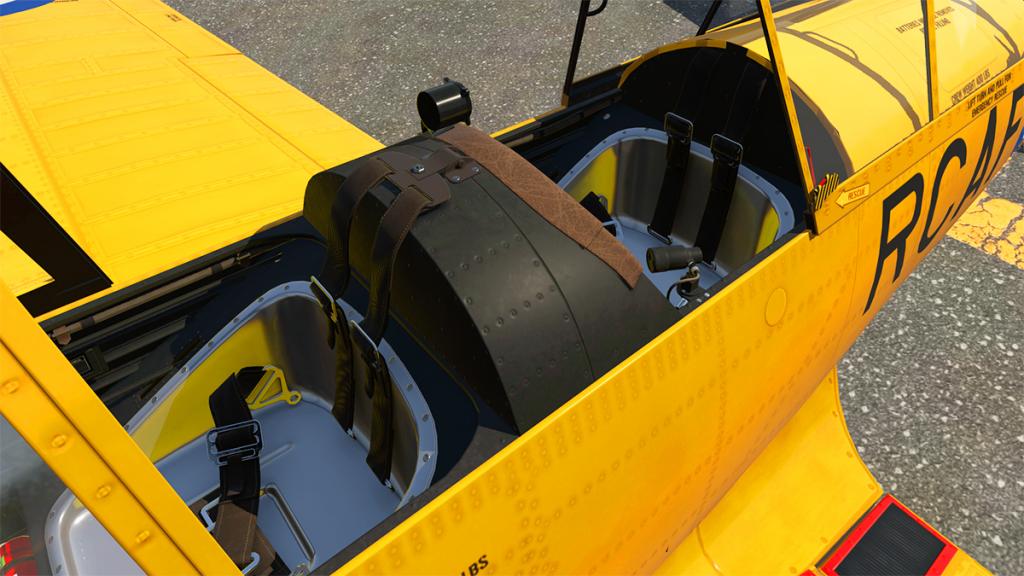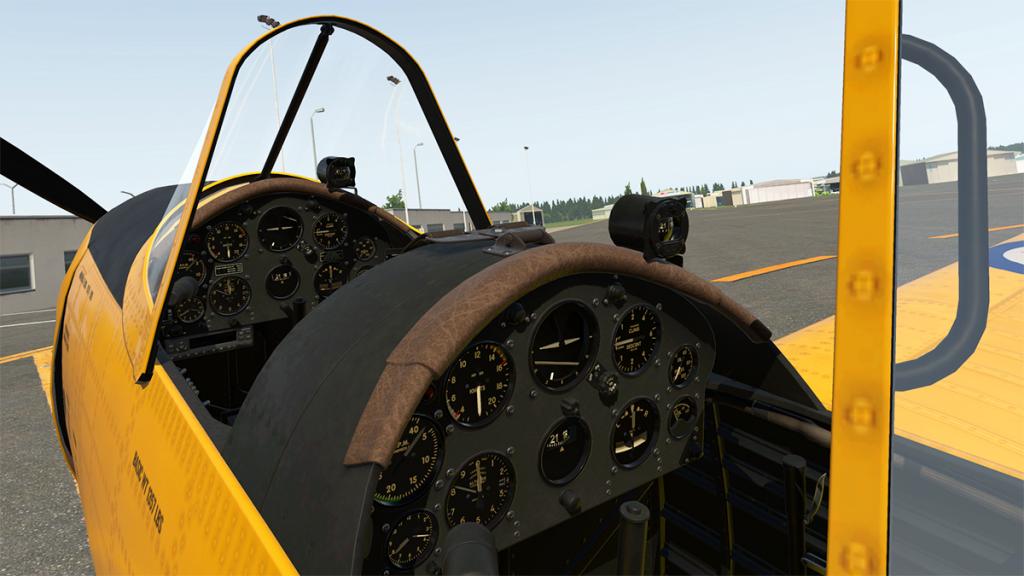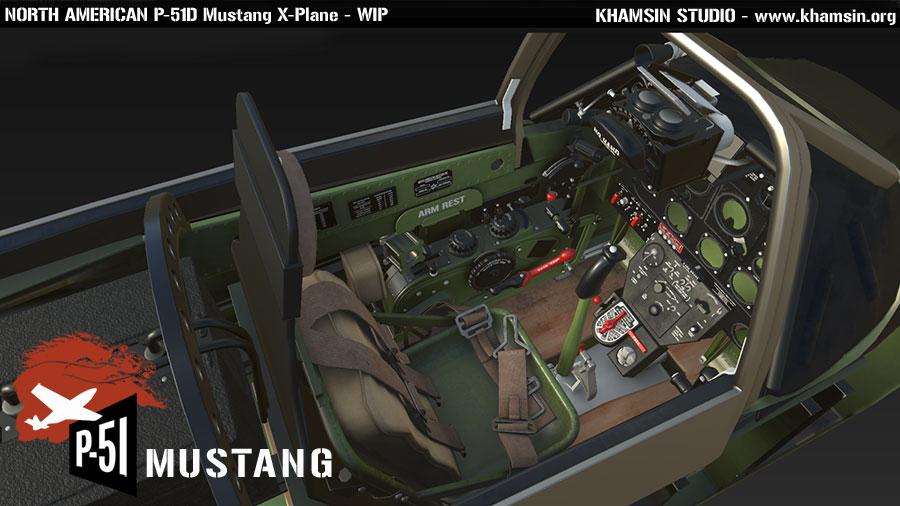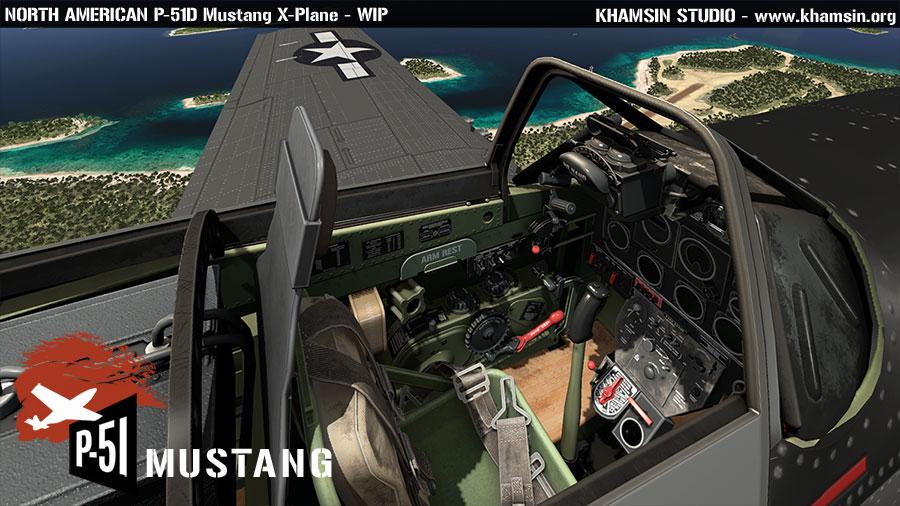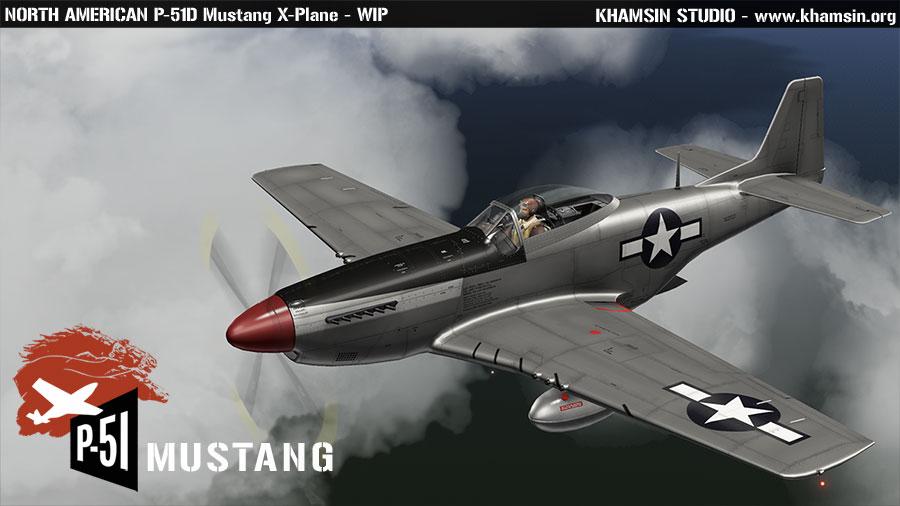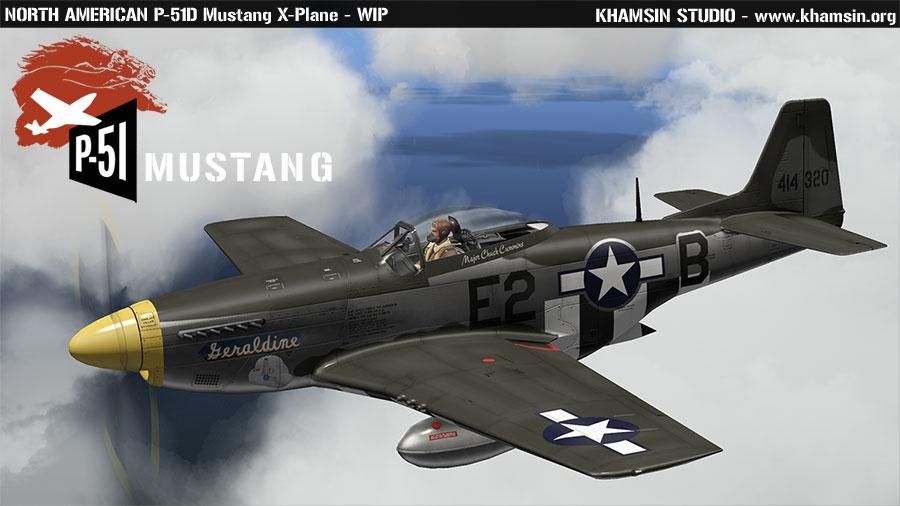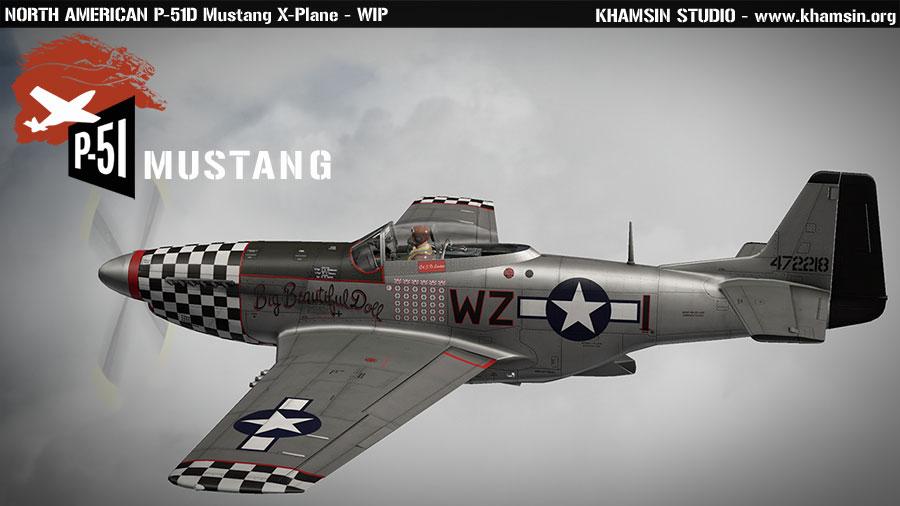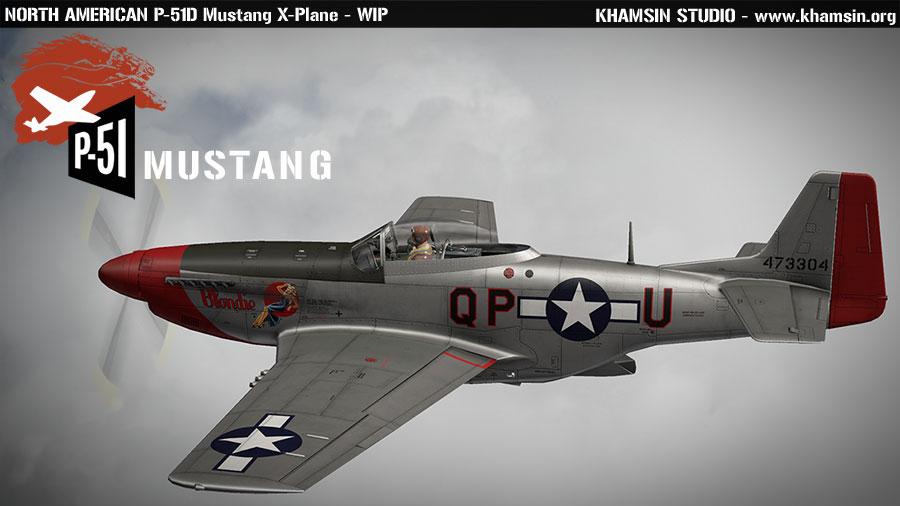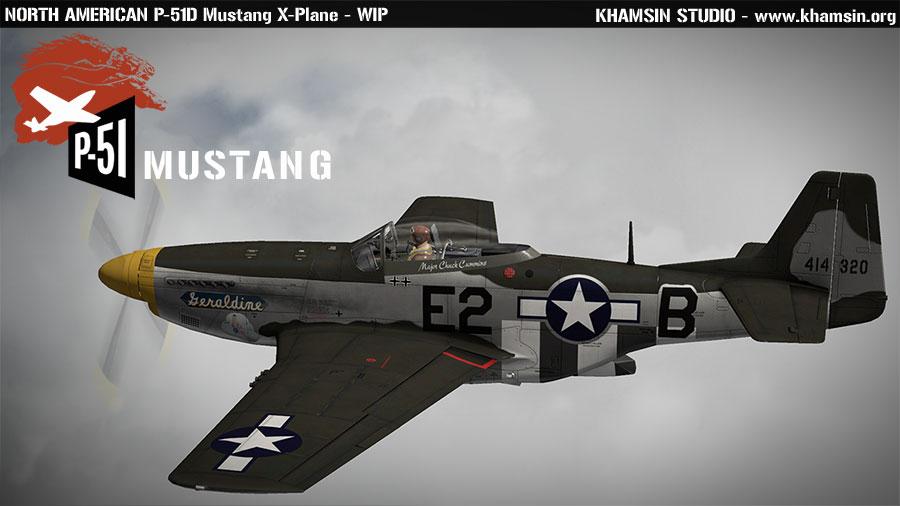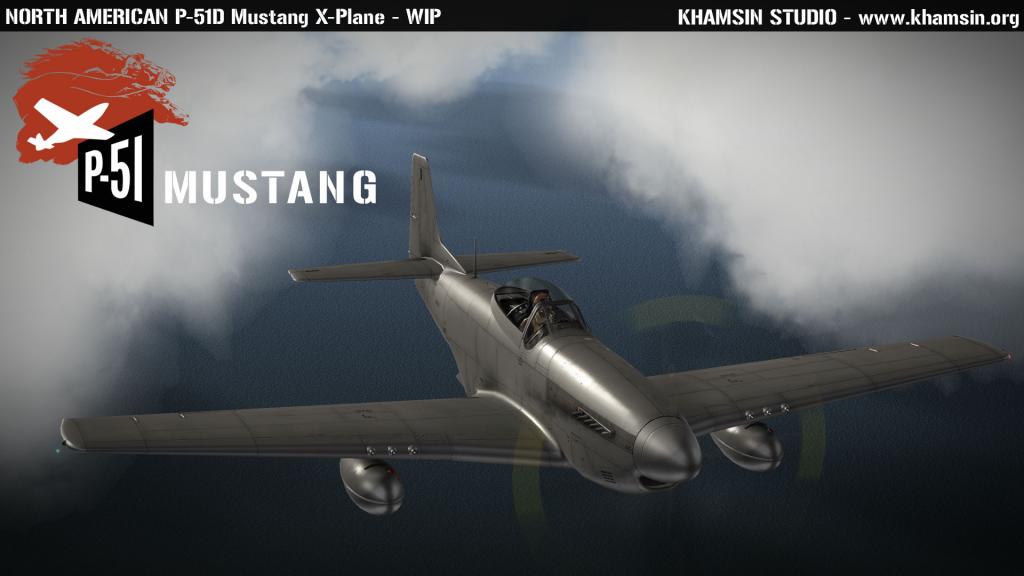Search the Community
Showing results for tags 'khamsin'.
-
Aircraft Review : de Havilland Canada DHC-1 Chipmunk v2 by Khamsin As in real life the DHC-1 Chipmunk is a survivor, The Chipmunk was the first postwar aviation project conducted by de Havilland Canada as being typically employed as a replacement for the ultra-successful de Havilland Tiger Moth biplane. The DHC-1 performed its maiden flight on 22 May 1946 and was introduced to operational service that same year. During the late 1940s and 1950s, the Chipmunk was procured in large numbers by military air services such as the Royal Canadian Air Force (RCAF), Royal Air Force (RAF), and several other nations' air forces, where it was often utilised as their standard primary trainer aircraft. The type was also produced under licence by de Havilland in the United Kingdom, who would produce the vast majority of Chipmunks, as well as by OGMA (Oficinas Gerais de Material Aeronáutico) in Portugal. The Chipmunk in X-Plane has flown very much under the radar, the aircraft was released by Khamsin as way back in 2013 in early X-Plane10... that is seven years ago or a lifetime in X-Plane terms, but there had been a few updates to keep the Chipmunk flying along with all the changes, but mostly it wasn't passing through X-PlaneReviews because the changes were only basically the very basic requirements to keep it flying throughout the many X-Plane revolutions. But you can only get away with that aspect for so long. So here is the v2 of the Khamsin DHC-1 Chipmunk, and this is a significant upgrade, not an update, but you can get a 50% off offer if you still purchased the earlier v1 aircraft. The aircraft is a post-war design, but considering that is 75 years ago now the DHC-1 looks and feels a more sixties design and mainly through it's complete metal frame and construction, it is only a basic trainer but a very decent one at that. The main modeling here has not really changed, but then it was very good back then. At first you observe that it really hasn't changed at all? or has it... The biggest impression is the textures, they look the same as the originals at first glance, obviously they have been updated with PBR (Physically Based Rendering)... ... but the texture mapping also outwardly looks the same? the highlighting is actually there, but you have to work hard in trying to distinguish them from the graphics. So you have to put the light in the right place to make the panel mapping come alive... ... so it is debatable if the mapping is not actually deep enough to overcome the graphics, or if it is actually correct? My gut says the mapping needed a slightly bit more depth to over come the heavy graphic detail like what was done on the P-38L Lightning, these old aircraft do have such heavy imprints on their bodywork, that said it is well done done here. External detailing is however excellent, cowls, airvents and the undercarriage are all very well done, as modeling is an art form then Khamsin is an old master. The tight streamlined nose cowling is exceptional as is the simple air-vent at the rear of the cowl, very authentic... gear is again simple but well done here and the inclusion of the shiny metal assembly that is worlds away from the 2013 original grey. Another great original detail that looks far better upgraded are the built wing fuel tank gauges at 9 GAL per wing, beautiful! Overall the detail and modeling is very good... in an old-fashioned way. The double-canopy and glass is very good as well, obviously the same as the original, but with the twist of the more modern effects of far better reflections, glass depth and the well done mottled wear and tear... ... the canopy can be opened via either of the front or rear red twist handles, and externally as well as internally. Cockpit quality feels and looks far, far better here than in the original, the textures have been totally redone and the lovely metallic dish shiny seats and the pure leather straps, seatbelts shows how completely different the materials are now in quality for developers to get closer and closer to that authentic goal of total realism. Overall you do feel the cockpit unlike the external has been completely redone over, as it certainly feels fresher and more realistic. Sitting in the cockpit and the quality abounds... the front and rear instrument panels are almost identical, so you can fly as easily in the rear as in the front... The only difference is that in the front there is a CTX330 Transponder and a (Laminar?) Bendix/King KY 197A single frequency COMM Radio, and some electrical switchgear with starter button, otherwise the instrument panels are identical. Looking down at your feet, the working metal rudder pedals and their heal plates are simply gorgeous, and extremely realistic... beautiful work. Right cockpit side is dominated by the large floor-mounted flap lever, again there is lovely chrome flap handle to release the flap selection, with three positions; UP-MID(15º)-Down(30º), there is also some nice animation as you use the lever... far right above is the carburettor air HOT - COLD adjustment. Left side forward are two small levers with inner, Throttle and outer MIxture. I found the Mixture lever flickered badly and would not adjust correctly and was also problematic in shutting down the engine? The large floor mounted lever is for using the brakes. Four switches upper left cover; Battery, Master Avionic and MAG (Magnetos) 1 & 2. Centre left is another switch electrical panel covering; Pitot Heat, Gen (Generator), Strobe Lights, Taxying Lights, Nav (Navigation) lights, and a large Cockpit Lights Dimmer Switch (knob). There is a nice large Elevator Trim Wheel, but I found the manipulators hard to use manually as one direction appears in one angle, but not the other, and the opposite way around, I found my keyboard (key) trimming far easier to use to adjust the nicely done trim wheel. Instrument panel The panel layout is basically all flying instruments, and only a few right side aircraft engine readouts... The centre top is dominated by an old fashioned Artificial Horizon that can be gated with a built in slip turn angle, below is a horizontal compass (there is also a very nice Whiskey Compass mounted high right). There are a cluster of instruments left including; RPM, Airspeed (Knots), Altitude and a clock. Another cluster of instruments is situated right including; (top) Vertical Speed Indicator, large Turn and Slip Indicator, Oil pressure gauge and Oil temperature gauge. Above the nice red Starter button is a Hobbs Hour meter. AviTab AviTab is built in... the tablet is also a Menu as well. The tablet is selected via touching the pouch below (arrowed), and looks quite nice in the way it is inserted via a window suction cup... but the screen is set at an odd angle and is none adjustable either, and obviously for VR (Virtual Reality) users. Pressing the eye will make the tablet disappear and you need to make it slightly darker via the light and dark sun icons. The Menu has three sets of settings; Sounds, Fuel Weight and Options in Canopy and Inst. (Instrument) Reflections. Switch off the Power and you do get some wheel-chocks and a left wing Pitot Cover, the well designed pilot though does not disappear, so the menu overall could have certainly been used for more Options, like different avionics, pilot on/off, or a second pilot for the rear and even a full canopy wrap cover... it seems to be a wasted opportunity. If you have a Navigraph account then you can log in and use it on the tablet, another option I would have liked was to be able to use the tablet in the vertical portrait mode as well as the Landscape mode, as it is better for charts... ... overall as options go the Chipmunk does not have a lot, and is basically basic in features. Flying the Chipmunk Fuel ON, Mixture up and press the Red starter button and Chipmunk roars into life with a brilliant sounding Gipsy Major Mk. 8 engine... Sounds are excellent, great idle sounds and the range is quite strong from not only throttle adjustments, but mixture changes as well, more so is the differences in tone between the canopy being open and closed... so the sound environment in dynamics is top notch and FMOD updated. Another thing I really liked was the Oil pressure adjusting on start up, and the Oil temperature gauge going constantly higher if you sat at idle for too long. Forward vision is awful, but this is a tail-dragger. The tail-wheel is fixed to the yaw, so the DHC-1 is very easy to taxi, but the pro's would complain.... another menu option? Power is provided by a four-cylinder, air-cooled Gipsy Major Mk. 8 engine, driving a two·bladed. fixed pitch propeller. The engine develops 145 BHP at sea level in ISA conditions. Two engine-driven fuel pumps (one for each tank) are provided and the engine also drives a generator and a vacuum pump. Electrical system is a 500-watt, engine-driven generator that charges the batteries and supplies DC for the following services: lighting, radio, pressure-head heater, oil temperature gauges. Two 12-volt, 15 AH batteries, that are connected together in series are housed in the rear fuselage and supply the aircraft services (except the pressure-head heater) when the generator is not charging. You tend to fly more head down than head up.... power up, but gradually You are waiting as you gain speed for the tail to lift, because once it does you have to quickly catch it with the rudder... ... you really feel this aircraft, every input to the controls is sublime, after a point you are ground flying and holding the line while now pushing up the throttle to get to a takeoff speed... which is around 74 knots or just above the flap boundaries. ... and away you go, feeding in input to the rudder, correcting with the stick, the Chipmunk is simply brilliant to fly. You don't go for that steep climb-out as the Chipmunk is not that sort of performance aircraft... 900 ft/min (4.6 m/s) is the limit anyway, so 500 ft/min is nice. You are not going to break the sound barrier either as 138 mph (222 km/h, 120 kn) at sea level is the maximum, and the cruise speed is only 103 mph (166 km/h, 90 kn), the ceiling however is a very surprising 15,800 ft (4,800 m), but you would very rarely fly that high. The DHC-1 does feel very alive. You have to keep and eye on both the Oil pressure and temperature as they can worry you, until the Chipmunk is settled after climbing and in fresh air, otherwise you just chatter along with a big smile on your face. One note is that you have to do a dab of the brakes to stop the wheels spinning? that shows up the original age of the aircraft. Trim the climb out and it is easy to find the sweet spot, once trimmed then you only then need minimum stick movements to keep the DHC-1 in a nice place, but control of the rudder has still to be done against the propeller side thrust, or the trainer will go off course. Any direction changes are smooth and you feel very much part of the machine, in other words a perfect partner of flight. Lighting Overall the lighting on the Chipmunk is pretty basic... There is the instrument adjustment and a side-light that casts a sort of green glow over the left side of the instrument panel is noted as a Fluorescent light, again adjustable... ... nice is the wing lit mounted fuel gauges, and the cockpit does look also super nice externally. External lighting is still a bit dated... there is a single landing light (left wheel strut), Navigation and strobe lights, but all are not updated or adjusted for the current lighting dynamics, so they are all external blobby... blobs. Taxiing, taking off and even cruising is easy in the Chipmunk, but it is the landing bit however requires a little bit of skill... The trick is to get down to the lowest speed you can and well before you start your final approach. The Chipmunk does not rub off speed easily, so you have to get own to well under the flap marker well before starting your landing... your aim is flap 30º and about 60 knts-62 knts, and then come down slowly... In total control above the runway I let the speed rub off and descend as slowly as I can... ... speed is now around 55 knts, but even at this slow pace you can get a few skips or touches on the ground before settling... ... that is the easy bit, the hard bit comes as the speed drops off and the Chipmunk starts to violently squirm, right, left, right... and you are fighting the rudder and you know quite early that the DHC will win this one! Finally I do a full 180º twist to stop facing the wrong way around... problem is you can't touch the brakes either unless you want to go end over front end... it is a trick to get the braking or speed reduction right, and I still have not mastered it. As I said.... it is tricky! Liveries There are only five liveries... A Canadian RCAF, Three RAF Trainers and a G (British) private registered aircraft... quality of all liveries and detail are excellent. WD347 (a real aircraft is default) ______________________ Summary The original de Havilland Canada DHC-1 Chipmunk was released by Khamsin as way back in 2013. In throughout the X-Plane versions the aircraft has had a few updates to keep it current, but here is an totally upgraded version in a new v2 form. The core modeling is still the same, but you wouldn't know it because the updating to current standards of textures, glass, materials and metals has been masterfully done here, and In that respect it is really a totally different aircraft in craftmanship and quality. Sounds are outstanding and fully updated to the FMOD system, dynamic and involving they are excellent in all aural aspects. Avitab is now included, and is also now the menu as well, if quite basic. Overall the Chipmunk does come across as a basic aircraft feature wise, and it would have been nice to have added in a few more niceties, like an extra pilot, or disappearing pilot(s) and even some other avionic choices... and a of the few earlier elements have still also come through like with the average external lighting and consistently rolling wheels, a few more liveries would not have gone amiss either. The Chipmunk is a post-war trainer, and a very good one at that. But for novice X-Plane pilots that want an interesting (but easy) tail-dragger then it would be very hard to go past this excellent Khamsin creation, but although taxiing, takeoff and flying the aircraft is easy and sublime... this Chipmunk does have a nasty sting in it's tail when landing. So all round a very good aircraft, and if you don't expect too much from it, it will reward you greatly... Highly Recommended. _________________________ The de Havilland Canada DHC-1 Chipmunk v2 by Khamsin is NOW available! from the X-Plane.Org Store here : DHC-1 Chipmunk v2 Owner of the previous DHC1 version 1 can get the new v2 version for 50% off: Use the coupon code found in your original DHC-1 Invoice. Your Price: $27.95 Main features New external 3D model New cockpit 3d model New pilot 3d model New 4K and 2K PBR textures New FMOD Sound Pack by Philip Ubben Accurate 3D visual model with normal maps - HD 4K textures Fully detailed and animated 3D cockpit with 3D gauges Polygon optimized model, manipulators technology VR ready Avitab 3D integration 5 liveries Same FPS as Default Cessna 172 SP for Windows and MacOs. FPS not tested in Linux. Options : show/hide reflections canopy and instruments, weight, sounds volumes COM, Transponder Requirements X-Plane 11 (fully updated) Windows , MAC or Linux 4 GB VRAM Minimum - 8GB + VRAM Recommended Current and Review version: 1.2 (October 1st 2020) Download Size: 336 mb : Install Size 346 mb Documentation : includes an extensive 22 page manual... DHC1_manual _____________________________________________________________________________________ Review by Stephen Dutton 14th September 2020 Copyright©2020 : X-Plane Reviews (Disclaimer. All images and text in this review are the work and property of X-PlaneReviews, no sharing or copy of the content is allowed without consent from the author as per copyright conditions) Review System Specifications: Computer System: Windows - Intel Core i7 6700K CPU 4.00GHz / 64bit - 16 Gb single 1067 Mhz DDR4 2133 - ASUS GeForce GTX 1080 8Gb - Samsung Evo 1Tb SSD Software: - Windows 10 - X-Plane v11.50r3 Addons: Saitek x52 Pro system Joystick and Throttle : Sound - Bose Soundlink Mini/Yamaha Speakers Plugins: : XPRealistic Pro v2 effects US$19.95 (highly recommended with the Chipmunk) Scenery or Aircraft - YBNA - Ballina Byron Gateway Airport 1.0 by Stricko 101 (X-Plane.Org) - Free
-
News! : Update P51-Mustang from Khamsin Studios Khamsin Studios has published more images of his forthcoming P51-Mustang. Mostly just aircraft liveries but that is no waver on the anticipation of this the coming to X-Plane of a quality aircraft of the most iconic of all American WW2 fighters. Cockpit is extremely detailed, but obviously still not completed, so release won't be very soon but more like coming in the near future. No doubt the P51 will be a great addition to your warbirds collection, and for showing off at the odd airshow. Although Khamsin notes that initially there will not be a race version available. Khamsin Studios Site: www.khamsin.org ______________________________________________________________________ Images are courtesy of Khamsin Studios Stephen Dutton Updated : 25th January 2016 Copyright©2016: X-PlaneReviews




























